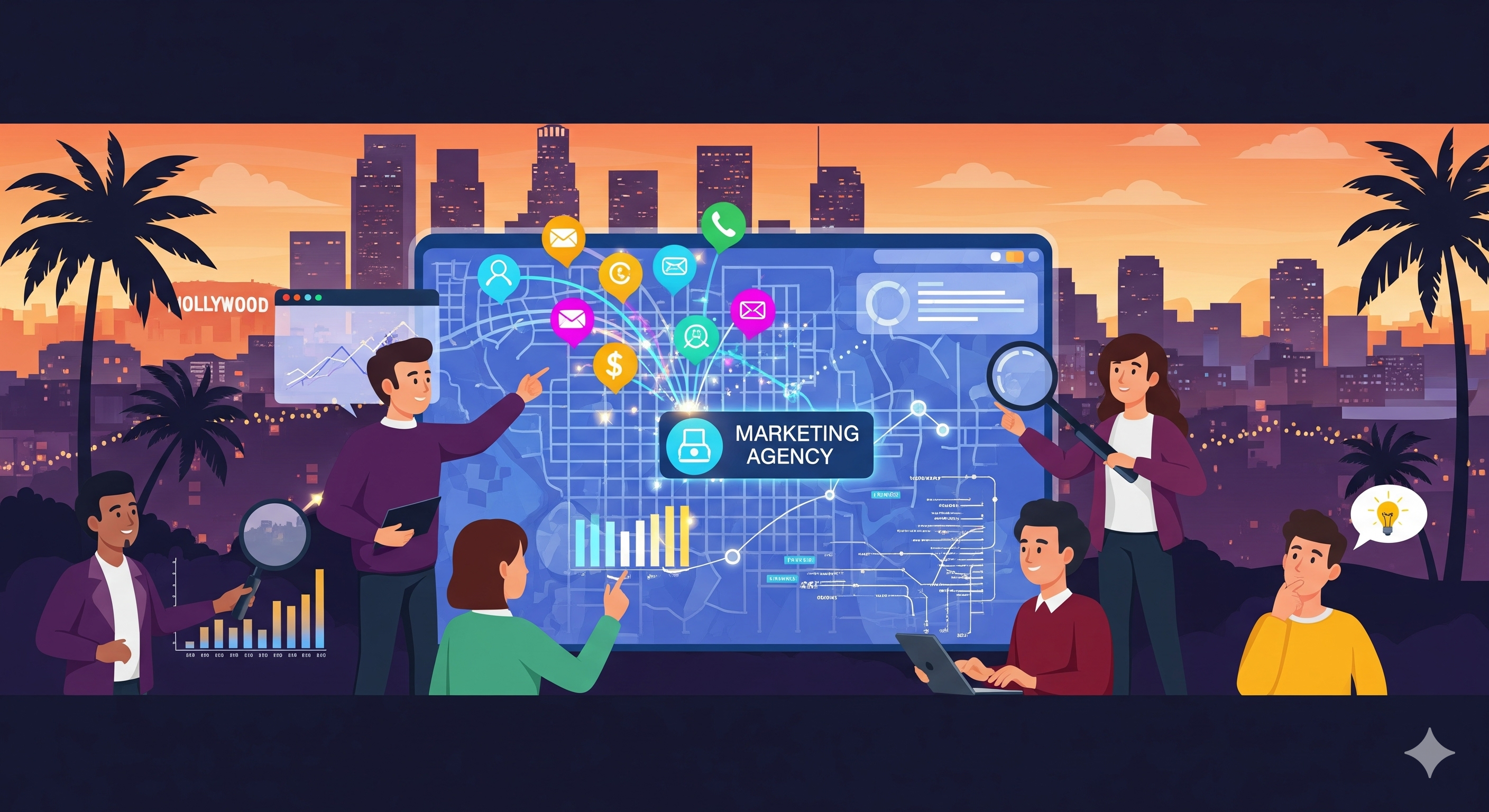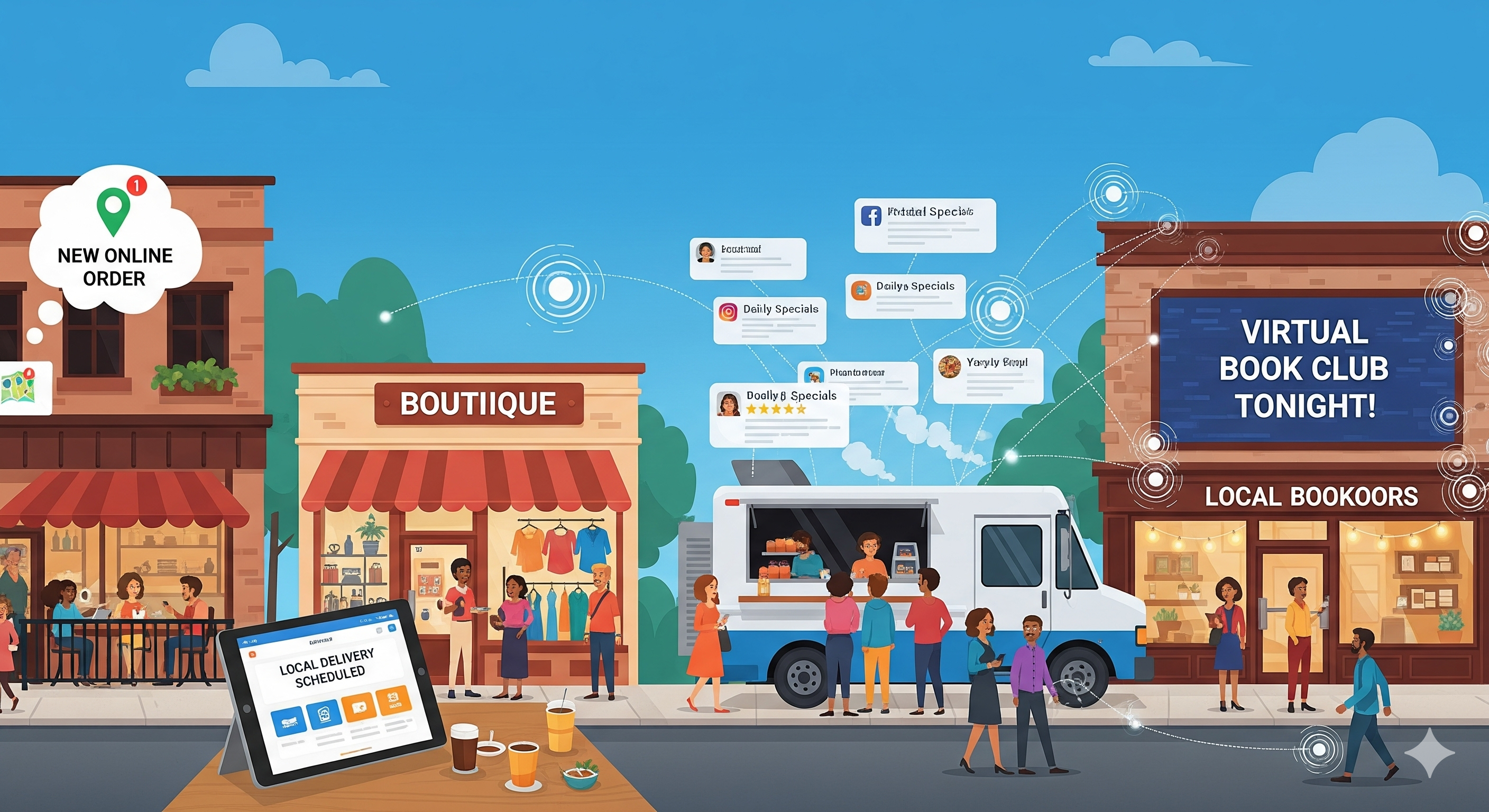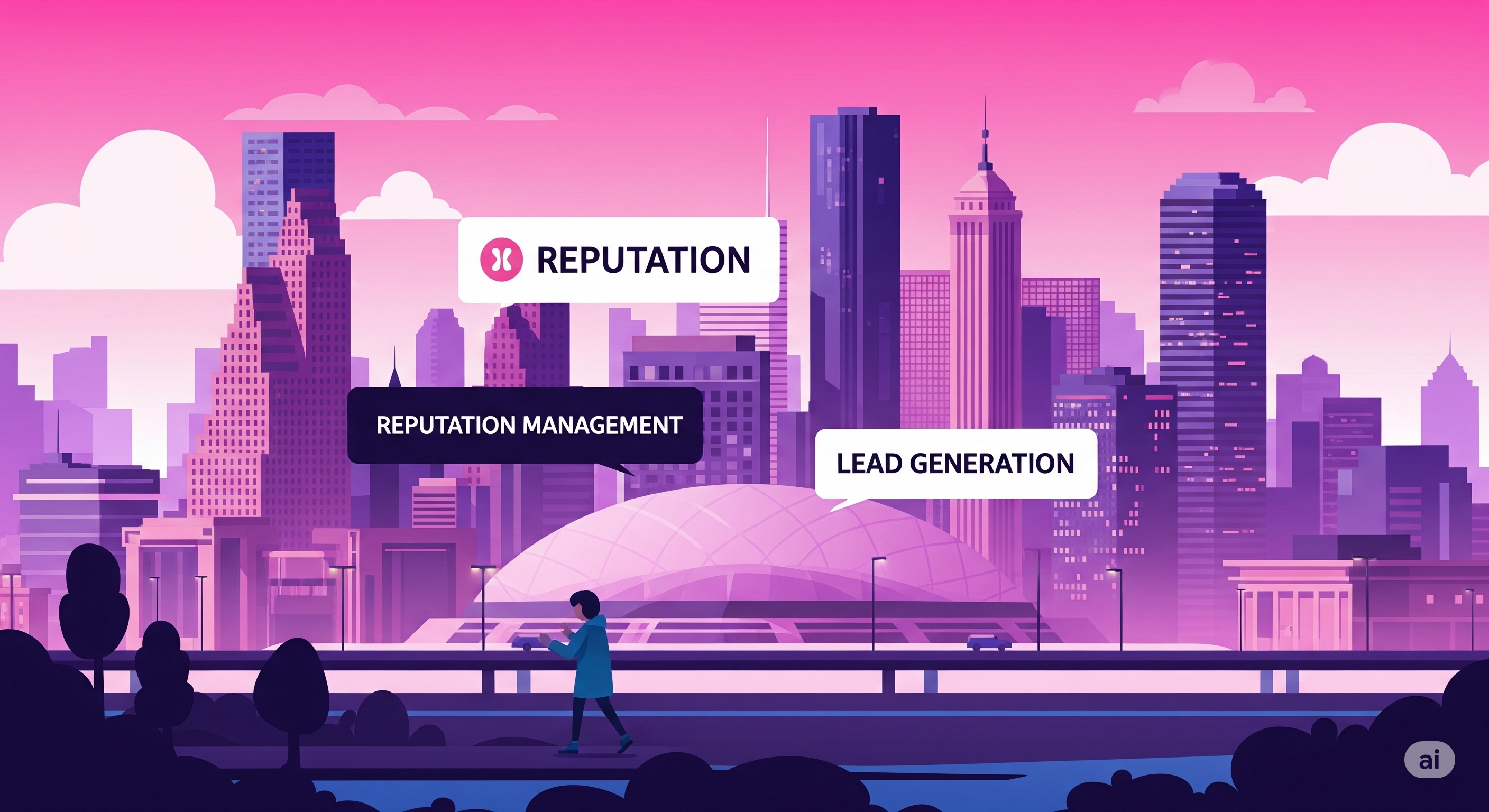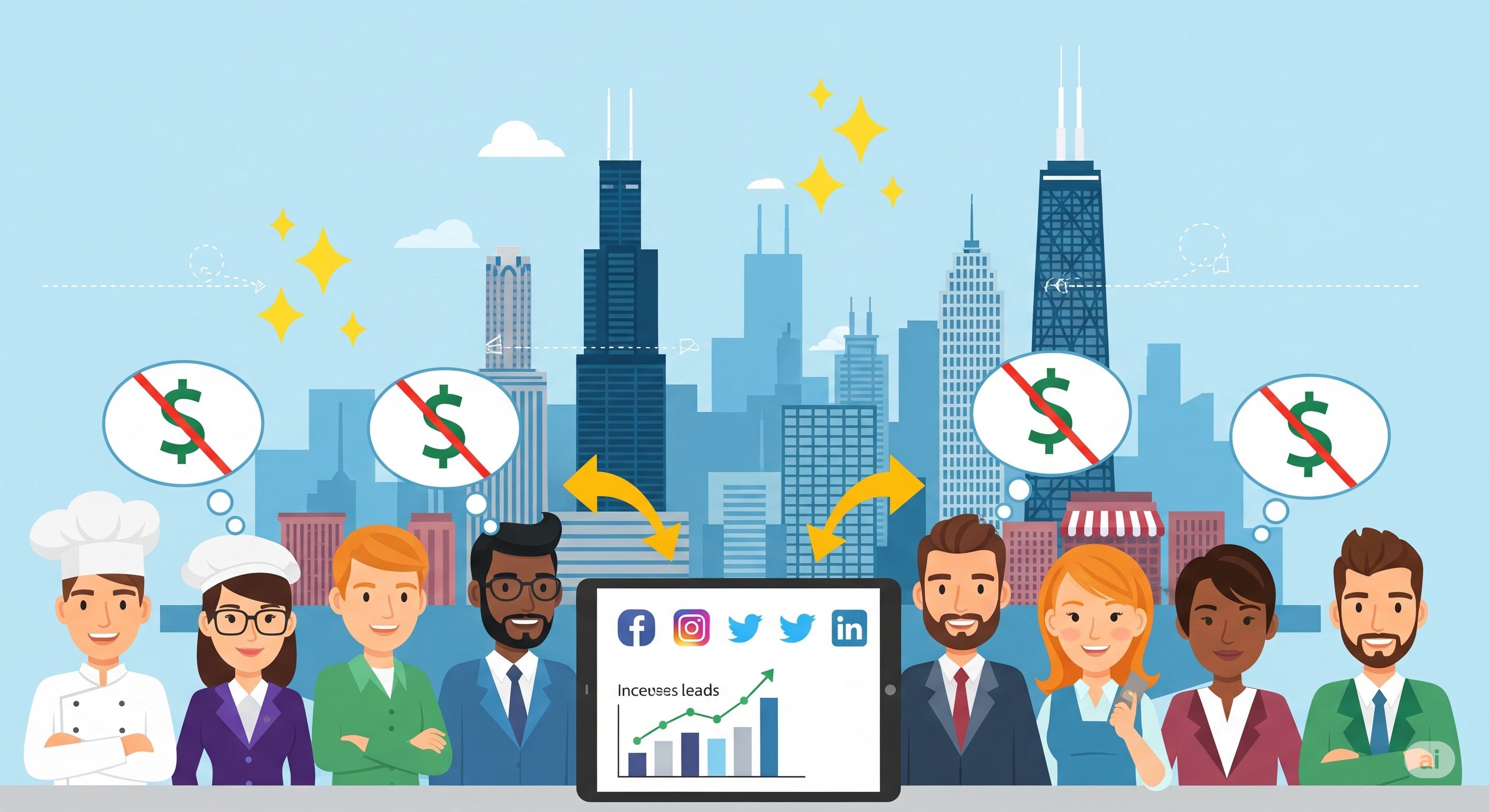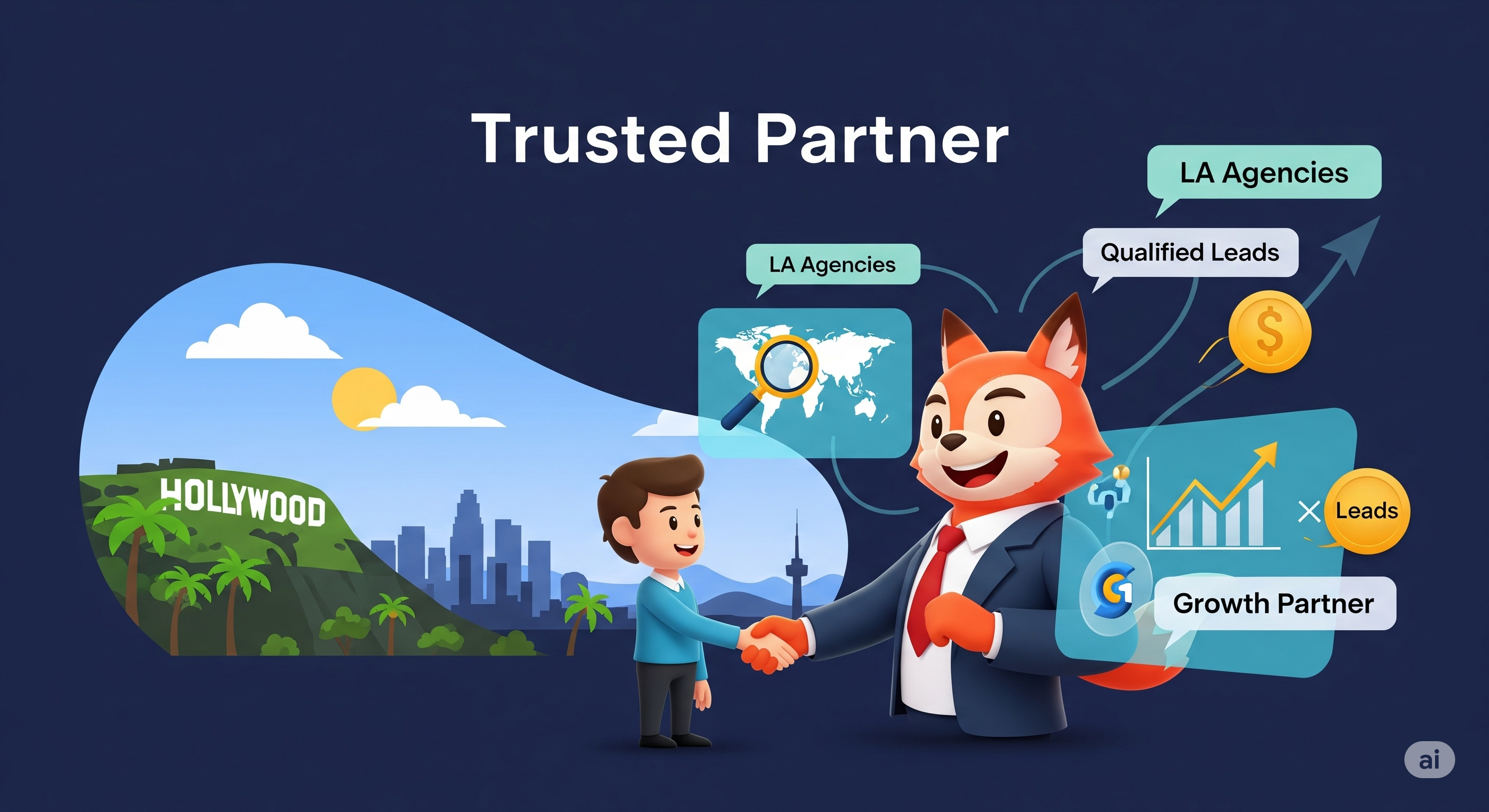In the fast-paced world of digital marketing, agencies in New York face one of the most competitive landscapes in the country. With countless businesses seeking to boost their online presence, the demand for skilled digital marketing agencies is at an all-time high. However, while opportunities are plentiful, the challenge lies in connecting with the right clients who are actively searching for SEO, PPC, web design, and social media marketing services. This is where a digital marketing lead generation company like Websiteseoleads.com plays a crucial role. By delivering qualified, warm leads, Websiteseoleads.com helps New York agencies build a steady pipeline of potential clients, enabling them to focus less on cold outreach and more on providing impactful marketing solutions. Why Lead Generation is Vital for New York Agencies New York is the business capital of the U.S., home to a wide variety of industries including finance, retail, healthcare, hospitality, and technology. Every business, whether a small startup in Brooklyn or a corporate firm in Manhattan, understands the value of having a strong online presence. Still, many struggle to find the right agency to manage their digital strategy. For marketing agencies, this creates immense opportunities—but also fierce competition. Without a reliable lead generation process, agencies often waste countless hours chasing uninterested prospects. Partnering with a specialized digital marketing lead generation company ensures that agencies connect with businesses that already understand the value of SEO, PPC, social media marketing, and reputation management. This results in higher conversions, better client relationships, and more predictable growth. How Websiteseoleads.com Supports New York Agencies Websiteseoleads.com is widely recognized for providing industry-specific, verified leads tailored to agency needs. Their approach is centered around quality, not just quantity. For New York agencies, this means fewer cold calls and more genuine conversations with prospects interested in digital marketing services. Key advantages of working with Websiteseoleads.com include: Benefits of Digital Marketing Lead Generation for Agencies For agencies serving New York’s competitive market, having access to warm leads is more than a convenience—it’s a necessity. Here’s why: Maximizing the Value of Digital Marketing Leads Receiving a steady stream of leads is only the beginning. To truly benefit, New York agencies need a strategy for engagement and conversion. Some proven methods include: Why New York Agencies Trust Websiteseoleads.com Agencies across New York have praised Websiteseoleads.com for its reliability, accuracy, and industry experience. With over a decade of expertise in internet marketing and lead generation, the company understands the unique challenges agencies face when it comes to acquiring new clients in competitive markets. For agencies in Manhattan, Brooklyn, Queens, or beyond, having a partner like Websiteseoleads.com ensures they never run short on opportunities. This allows them to spend more time building strong client relationships and delivering impactful campaigns that produce real results. Conclusion In a city as competitive as New York, agencies need every advantage to stay ahead. Partnering with a digital marketing lead generation company like Websiteseoleads.com gives agencies access to warm, qualified leads that convert. By focusing on delivering quality rather than chasing quantity, Websiteseoleads.com empowers New York agencies to grow confidently, win new clients, and achieve long-term success. For agencies aiming to expand their client base and establish a stronger presence in the digital marketplace, investing in professional lead generation isn’t just an option—it’s the key to sustainable growth. With WebsiteSeoLeads, New York agencies can confidently build their future, one qualified lead at a time.
Best SEO Lead Generation Services for Marketing Agencies in Los Angeles
Los Angeles is one of the most competitive cities in the United States when it comes to digital marketing. With countless businesses competing for visibility online, marketing agencies in LA face the constant challenge of standing out, attracting clients, and maintaining steady growth. One of the most effective ways to keep an agency thriving in this dynamic market is by using SEO lead generation services that deliver warm, qualified prospects ready to invest in digital marketing. Websiteseoleads.com has positioned itself as a trusted provider of high-quality SEO leads specifically designed for marketing agencies. For agencies in Los Angeles, this means a reliable partner that helps them secure new clients without exhausting resources on cold outreach or ineffective advertising campaigns. Why Los Angeles Agencies Need SEO Lead Generation The business environment in Los Angeles is diverse, ranging from entertainment and hospitality to tech startups, health services, and e-commerce. All of these industries rely heavily on online visibility to attract customers, which makes SEO a top priority. However, not every business knows how to implement effective SEO strategies. That’s where marketing agencies step in. The challenge, however, lies in connecting agencies with businesses that are actively looking for SEO services. Traditional outreach methods like cold emails, door-to-door sales, or generic ads often waste valuable time and money. By partnering with a dedicated SEO lead generation company, agencies in Los Angeles can gain access to businesses that are already aware of the importance of SEO and are actively seeking expert help. What Makes Websiteseoleads.com the Best Choice Websiteseoleads.com is widely recognized for its ability to provide targeted, qualified, and verified SEO leads. Each lead is carefully sourced and vetted to ensure agencies receive prospects that align with their services and target market. For Los Angeles agencies, this translates to higher conversion rates and a more efficient client acquisition process. Key features that make Websiteseoleads.com stand out include: Benefits of Using SEO Lead Generation in Los Angeles Strategies for Maximizing Lead Potential Once agencies receive SEO leads, the next step is converting them into loyal clients. Los Angeles agencies can maximize their success by applying the following strategies: Why Los Angeles Agencies Trust Websiteseoleads.com Agencies across the U.S. have praised Websiteseoleads.com for its ability to provide accurate, high-quality leads. Los Angeles agencies, in particular, benefit from the company’s understanding of diverse industries and the city’s highly competitive business environment. By leveraging their 10+ years of experience in digital marketing and lead generation, Websiteseoleads.com ensures that agencies not only receive leads but also gain prospects that match their service offerings. This combination of expertise and reliability makes them a go-to partner for agencies seeking consistent growth. Conclusion For marketing agencies in Los Angeles, the demand for SEO services is stronger than ever. However, the ability to secure clients in such a competitive market depends heavily on having a steady flow of qualified leads. Partnering with a trusted lead generation provider like Websiteseoleads.com ensures agencies have access to warm, verified prospects who are ready to invest in SEO. With the right leads, Los Angeles agencies can focus less on client hunting and more on delivering outstanding digital marketing solutions. In an environment where reputation and results matter, investing in professional SEO lead generation is not just a smart strategy—it’s a necessity for sustained growth and long-term success. WebsiteSeoLeads
Trending Social Media Marketing Services in Miami
Miami is not just a hub for beaches and nightlife—it’s also a thriving center for businesses looking to grow their digital presence. In today’s competitive market, social media marketing is essential for brands to connect with their audience, increase engagement, and drive sales. At WebsiteSeoLeads, we provide trending social media marketing services tailored for Miami businesses that want real results. Why Social Media Marketing is Essential in Miami Social media has transformed the way businesses interact with customers. In a city like Miami, where businesses range from local boutiques to large international brands, staying visible online is key. Social media marketing allows companies to: Our services are designed to help Miami businesses leverage these benefits effectively. Our Trending Social Media Marketing Services At WebsiteSeoLeads, we offer a comprehensive range of social media marketing services that are currently trending in Miami: H3: Social Media Strategy Development We craft custom strategies tailored to your business goals. By analyzing your audience, competitors, and market trends, we ensure your social campaigns are effective and targeted. H3: Content Creation and Management Our team creates engaging content including graphics, videos, and posts that resonate with your audience. We manage posting schedules and maintain consistent brand messaging across all platforms. H3: Paid Social Media Advertising Boost your visibility with targeted social media ads. We manage campaigns on platforms like Facebook, Instagram, LinkedIn, and TikTok to drive conversions and increase ROI. H3: Social Media Analytics and Reporting We provide detailed performance reports to track your growth. By analyzing engagement metrics, we optimize campaigns to ensure your marketing dollars are spent effectively. Why Choose Website SEO Leads in Miami Choosing the right social media marketing partner can make all the difference. Here’s why Miami businesses trust us: Our team is committed to helping Miami businesses stay ahead in the fast-paced digital world. Get Started Today If you’re ready to boost your online presence and grow your business in Miami, WebsiteSeoLeads today. Our trending social media marketing services are designed to help you engage your audience, increase brand visibility, and achieve measurable results.
Best Conversion-Focused Marketing Services in Boston
When it comes to growing your business online, Boston companies are increasingly turning to conversion-focused marketing services. The goal isn’t just to attract visitors but to turn them into loyal customers. At WebsiteSeoLeads, we specialize in delivering marketing solutions designed to maximize conversions, improve ROI, and strengthen your digital presence. Why Conversion-Focused Marketing Matters In today’s competitive business landscape, attracting traffic alone isn’t enough. Businesses in Boston need strategies that drive meaningful actions such as: Conversion-focused marketing ensures that every click, visit, and interaction has a purpose and contributes to your business goals. Key Services That Boost Conversions 1. Search Engine Optimization (SEO) SEO is the foundation of conversion-focused marketing. Our team optimizes your website to rank higher in search engines for relevant keywords, ensuring that potential customers can find you when they are ready to take action. We focus on: 2. Pay-Per-Click Advertising (PPC) Paid advertising is a powerful tool when done strategically. Our PPC campaigns target high-intent users, driving qualified traffic to your website. We help Boston businesses: 3. Website & Landing Page Optimization A beautiful website isn’t enough if it doesn’t convert. We design and optimize landing pages with clear calls-to-action, fast load speeds, and mobile-friendly layouts to increase conversions. Our process includes: 4. Email Marketing & Automation Email marketing remains one of the most effective ways to convert leads into customers. We create personalized email campaigns for Boston businesses that: 5. Analytics & Conversion Tracking To improve conversions, you need to understand what works. Our team sets up comprehensive analytics and tracking to monitor: Why Choose WebsiteSeoLeads in Boston At WebsiteSeoLeads, we combine local market expertise with cutting-edge marketing strategies. Here’s what sets us apart: Get Started with Boston’s Best Conversion-Focused Marketing Services Whether you are a small startup or an established Boston business, WebsiteSeoLeads is ready to help you boost your online conversions. Contact us today to schedule a consultation and see how our conversion-focused strategies can transform your digital marketing results.
Most Popular Local SEO Services in Atlanta for 2025
As businesses in Atlanta continue to compete in an increasingly digital marketplace, local SEO has become a crucial tool for attracting customers. Our company specializes in providing cutting-edge SEO solutions that help local businesses dominate search results and grow their customer base. Why Local SEO is Essential for Atlanta Businesses Local SEO focuses on optimizing your online presence to attract more business from relevant local searches. With Atlanta’s competitive market, having a strong local SEO strategy ensures that your business appears at the top of search results when potential customers are looking for services or products you offer. Benefits of Local SEO for Your Business Our Most Popular Local SEO Services in Atlanta Our company offers a comprehensive suite of local SEO services tailored to the needs of Atlanta businesses. Here’s a look at what makes our offerings stand out: 1. Local Keyword Research and Optimization Understanding what your customers are searching for is the foundation of effective local SEO. We analyze high-performing keywords specific to Atlanta neighborhoods and optimize your website to attract relevant traffic. 2. Google Business Profile Management Your Google Business Profile is often the first thing potential customers see. We help you optimize listings, manage reviews, and maintain accurate business information, ensuring maximum visibility. 3. Local Link Building Earning links from reputable Atlanta-based websites boosts your authority and improves your rankings. Our team focuses on ethical and effective link-building strategies that drive long-term results. 4. On-Page SEO and Content Optimization From meta tags to local landing pages, we ensure that every part of your website is optimized for search engines. We also create engaging, locally relevant content that resonates with your target audience. 5. Reputation Management Positive reviews are vital for local businesses. We help monitor, manage, and respond to reviews, improving your online reputation and building trust with potential customers. Why Choose Us for Your Atlanta Local SEO Needs How to Get Started with Local SEO in Atlanta Getting started is simple. Contact us today to schedule a consultation, and we’ll create a customized local SEO strategy designed to grow your business. Whether you’re a small business or a large enterprise, our local SEO services can help you dominate the Atlanta market. Contact Us Today: https://websiteseoleads.com
Best Digital Marketing Solutions for Small Businesses in Los Angeles
Los Angeles is a bustling hub for small businesses, from local boutiques to tech startups. To compete and thrive in this competitive market, small businesses need digital marketing strategies that are not only effective but also tailored to their unique needs. At WebsiteSeoLeads, we specialize in providing top-notch digital marketing solutions that help small businesses in Los Angeles reach their full potential online. Understanding the Local Market Los Angeles is a diverse city with businesses competing in every niche imaginable. Without a strong digital presence, small businesses risk being overshadowed by larger competitors. Digital marketing allows local businesses to target their ideal audience, increase brand awareness, and drive more sales. Cost-Effective Marketing Strategy Traditional advertising methods can be expensive and often fail to deliver measurable results. Digital marketing, on the other hand, offers targeted campaigns that are budget-friendly, ensuring small businesses get the most out of every dollar spent. Our Comprehensive Digital Marketing Solutions At WebSite SEO Leads, we provide a range of services designed to help small businesses grow online. Here’s how we can make a difference: Search Engine Optimization (SEO) Our SEO strategies are crafted to boost your website’s visibility on Google and other search engines. By optimizing your site with local SEO techniques, we ensure that customers searching for your products or services in Los Angeles can easily find you. Social Media Marketing (SMM) Engage with your audience on platforms where they spend the most time. Our SMM strategies focus on building brand loyalty and attracting potential customers. Pay-Per-Click Advertising (PPC) We create targeted PPC campaigns that drive traffic and generate leads. Our team monitors campaigns closely to ensure you get maximum ROI. Content Marketing High-quality content positions your business as an authority in your niche. We create blogs, videos, and infographics designed to educate and engage your audience. Why Choose WebSite SEO Leads for Your Small Business Proven Track Record We have successfully helped numerous small businesses in Los Angeles increase their online presence, attract more leads, and boost sales. Customized Strategies Every business is unique, which is why we tailor our marketing solutions to meet your specific goals and challenges. Transparent Reporting We provide clear and detailed reports so you can track your campaign performance and understand your ROI. How to Get Started Taking your business to the next level is easy. Visit WebsiteSeoLeads to schedule a consultation. Our experts will assess your business needs and design a personalized digital marketing plan that delivers results. Final Thoughts Small businesses in Los Angeles face fierce competition, but with the right digital marketing solutions, success is achievable. WebsiteSeoLeads is your trusted partner in navigating the digital landscape, helping you attract more customers, increase sales, and grow your brand.
Top SEO Lead Generation Services Trending in New York City
In today’s fast-paced digital landscape, businesses in New York City are constantly looking for ways to attract high-quality leads and expand their online presence. With the rising demand for SEO-driven marketing strategies, SEO lead generation services have become one of the most effective tools for business growth. Why SEO Lead Generation is Essential for NYC Businesses New York City is one of the most competitive markets in the United States. Companies not only need to rank on search engines but also attract leads that convert into paying customers. SEO lead generation combines the power of search engine optimization with targeted marketing strategies, ensuring that your business connects with potential clients actively searching for your services. By leveraging SEO lead generation, businesses in NYC can: Services We Offer At WebsiteSeoLeads, we specialize in providing comprehensive SEO lead generation solutions tailored for New York City businesses. Our services include: Why Choose Us for SEO Lead Generation in NYC? Conclusion For businesses in New York City, SEO lead generation is not just an option—it’s a necessity. By partnering with WebsiteSeoLeads, you can attract more qualified leads, grow your client base, and stay ahead of your competition. Whether you’re a small startup or an established company, our top SEO lead generation services in New York City can help transform your online presence and maximize your business growth.
Reputation Management Lead Generation Company Serving Houston Agencies
In today’s digital age, reputation is everything. Businesses in Houston, like those across the country, are increasingly aware that online reviews, ratings, and public perception can make or break their success. For marketing agencies, offering reputation management services has become a crucial part of their portfolio. However, finding clients who need and value these services can be challenging. This is where a reliable reputation management lead generation company can provide a competitive edge. Websiteseoleads.com has earned a strong reputation as a leading provider of high-quality, warm leads for reputation management services, specifically helping agencies in Houston connect with businesses actively seeking to improve or maintain their online image. By supplying verified and interested prospects, agencies can focus more on delivering exceptional services rather than spending valuable time searching for potential clients. Why Houston Agencies Need Reputation Management Leads Houston is home to a diverse range of businesses—from restaurants and retail stores to professional service providers and tech startups. Many of these businesses understand the impact of online reviews and public perception but lack the expertise to manage their digital reputation effectively. A specialized reputation management lead generation service identifies businesses that require assistance with online reviews, social media reputation, and brand management. This allows Houston agencies to engage with prospects who already recognize the value of reputation services, increasing the likelihood of meaningful conversions. How Websiteseoleads.com Helps Houston Agencies Websiteseoleads.com distinguishes itself by delivering targeted, relevant leads that align with an agency’s service offerings. Every lead is carefully vetted, ensuring it represents a business actively seeking reputation management solutions. For Houston agencies, this means higher conversion rates, better client engagement, and more predictable business growth. Their process combines advanced analytics, targeted research, and industry insights to identify companies that require reputation management support. By focusing on qualified prospects, agencies save time and resources, allowing them to devote more attention to providing excellent service to clients. Benefits of Using a Reputation Management Lead Generation Service How Houston Agencies Can Maximize Lead Potential Receiving high-quality leads is only the first step; converting them requires strategy and timely action. Houston agencies can implement these best practices to make the most of reputation management leads: Why Houston Agencies Trust Websiteseoleads.com Houston agencies have consistently rated Websiteseoleads.com as a reliable and effective partner for client acquisition. Testimonials emphasize the company’s commitment to providing accurate, high-quality leads and its deep understanding of the digital marketing landscape. For businesses competing in Houston’s vibrant market, having access to verified, interested prospects can significantly impact growth. Agencies can expand their service offerings, secure more clients, and strengthen their market presence without the stress of sourcing leads independently. Conclusion For Houston agencies specializing in reputation management, partnering with a trusted lead generation company like WebsiteSeoLeads is essential for sustained growth. By providing warm, qualified leads, the platform allows agencies to focus on delivering exceptional services while ensuring a steady stream of new clients. With Houston’s growing business landscape, agencies that leverage high-quality reputation management leads gain a competitive edge. WebsiteSeoLeads offers the tools and expertise needed to identify, connect with, and convert businesses looking for reputation management services. By investing in professional lead generation, Houston agencies can maximize their client acquisition efforts, enhance their service offerings, and achieve long-term success in the digital marketing industry.
Affordable Social Media Marketing Leads for Businesses in Chicago
In the bustling business landscape of Chicago, companies of all sizes are realizing the power of social media marketing to drive growth and connect with customers. However, one of the biggest challenges businesses face is identifying and reaching out to the right prospects who are genuinely interested in their services. This is where a reliable social media marketing lead generation service becomes an essential tool for growth and success. Websiteseoleads.com has positioned itself as a top provider of affordable social media marketing leads for businesses in Chicago, helping local companies access high-quality, verified prospects. By connecting businesses with potential clients who are already interested in social media solutions, companies can save time, reduce marketing costs, and focus on delivering exceptional services. Why Chicago Businesses Need Social Media Marketing Leads Chicago is home to a diverse mix of small businesses, startups, and large enterprises. While many businesses understand the importance of having a strong online presence, they often struggle to find potential clients or partners who are actively looking for social media marketing solutions. A dedicated lead generation service helps Chicago businesses overcome this challenge by identifying prospects who have already shown an interest in services like social media management, advertising, and strategy development. Instead of spending valuable hours on cold outreach or unqualified leads, businesses can focus on nurturing relationships with prospects who are more likely to convert into paying clients. How Websiteseoleads.com Helps Chicago Businesses Websiteseoleads.com specializes in providing high-quality, affordable leads tailored to the unique needs of businesses in different industries. For social media marketing, their services include: By leveraging Websiteseoleads.com, Chicago businesses gain access to leads that are pre-qualified and ready for engagement, allowing them to focus on building relationships and closing deals rather than searching for prospects. Benefits of Using Social Media Marketing Leads Maximizing the Value of Social Media Marketing Leads Receiving leads is only the first step. Chicago businesses can maximize their success by implementing effective strategies for follow-up and engagement: Why Chicago Businesses Trust Websiteseoleads.com Local businesses in Chicago have consistently praised Websiteseoleads.com for its professionalism, reliability, and high-quality leads. Clients appreciate the company’s dedication to providing prospects that are genuinely interested in social media marketing services, which translates into more meaningful engagements and higher conversion rates. For businesses looking to stay ahead in a competitive market, having access to verified, affordable leads can be a game-changer. By partnering with Websiteseoleads.com, companies can focus on what they do best—providing excellent social media marketing services—while leaving lead acquisition to experienced professionals. Conclusion In a city like Chicago, where businesses are constantly looking for ways to connect with their audience online, affordable social media marketing leads can provide a significant advantage. Websiteseoleads.com offers a trusted solution, connecting businesses with high-quality prospects who are ready to engage. Investing in a professional lead generation service allows Chicago businesses to save time, reduce marketing costs, and focus on growing their brand. With WebsiteSeoLeads, companies can confidently build their client base, strengthen local presence, and achieve sustainable growth in the competitive world of social media marketing.
Trusted Web Design Lead Generation Partner for Los Angeles Agencies
In a city as competitive as Los Angeles, web design agencies face the constant challenge of finding new clients who are genuinely interested in creating or redesigning their websites. While delivering high-quality design and user experiences is crucial, agencies often struggle with the time-consuming task of acquiring leads. This is where a trusted web design lead generation partner can make all the difference. Websiteseoleads.com has positioned itself as a leading solution for agencies in Los Angeles seeking warm, qualified leads for web design services. By connecting agencies with businesses actively looking for web design expertise, the platform enables agencies to focus on delivering exceptional design work instead of spending endless hours searching for potential clients. Why Los Angeles Agencies Need Web Design Lead Generation Los Angeles is home to a dynamic mix of startups, established businesses, and creative enterprises. Many of these organizations understand the importance of having an impressive online presence but lack the resources or knowledge to execute a website project on their own. This creates a unique opportunity for local agencies to step in and offer professional web design services. However, finding businesses that are ready to invest in a website can be challenging. Traditional methods like cold calling or networking events often lead to low conversion rates and wasted time. By partnering with a web design lead generation company, Los Angeles agencies can receive pre-qualified leads that are actively seeking web design solutions, improving efficiency and increasing the chances of converting prospects into clients. How Websiteseoleads.com Helps Los Angeles Agencies What sets Websiteseoleads.com apart is its focus on quality and relevancy. Every lead is carefully vetted to ensure it aligns with the agency’s service offerings and target market. For Los Angeles agencies, this means fewer dead-end contacts and more meaningful interactions with businesses that need professional web design support. Their lead generation process combines advanced data analytics, market research, and direct outreach strategies to identify companies that are actively looking for web design services. This results in leads that are not only interested but also more likely to convert into paying clients. Websiteseoleads.com also offers flexibility for agencies to select leads based on industry, company size, and location. Whether your agency specializes in e-commerce sites, corporate websites, or creative portfolios, you can access leads that match your specific expertise. Benefits of Partnering with a Web Design Lead Generation Company Tips for Maximizing Web Design Lead Potential Receiving high-quality leads is only the first step. To convert these prospects into paying clients, Los Angeles agencies can adopt several effective strategies: Why Los Angeles Agencies Trust Websiteseoleads.com Los Angeles agencies consistently praise Websiteseoleads.com for delivering reliable, high-quality leads that help them grow their businesses. By providing leads that are already interested in web design services, agencies can focus on doing what they do best—creating outstanding websites—while maintaining a consistent flow of potential clients. With the growing demand for professional web design in Los Angeles, partnering with a trusted lead generation company is no longer optional—it’s a strategic advantage. Agencies that leverage Websiteseoleads.com gain access to a targeted pool of prospects, reduce wasted effort, and increase their chances of securing long-term clients. Conclusion For web design agencies in Los Angeles, finding new clients can be a daunting and time-consuming task. Websiteseoleads.com offers a proven solution by providing pre-qualified leads that match each agency’s specific services and target audience. By partnering with a trusted lead generation company, agencies can streamline their client acquisition process, increase conversion rates, and focus on delivering top-quality web design services. Investing in professional web design lead generation is a strategic move that allows Los Angeles agencies to grow their client base efficiently. With WebsiteSeoLeads, agencies can confidently focus on creativity, innovation, and client satisfaction while leaving the lead generation to the experts.


